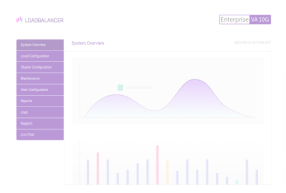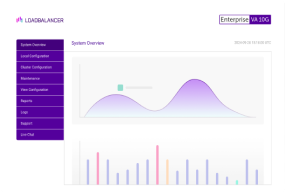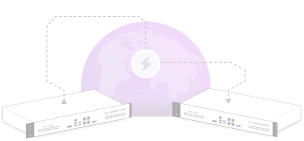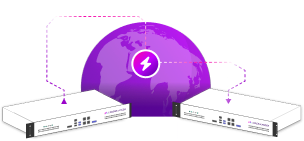Load balancing Sectra Medical Systems
Benefits of load balancing Sectra Medical Systems
Load balancing distributes incoming traffic (like DICOM studies or user requests) across multiple Sectra application servers, which results in these key benefits:
- High Availability (HA): By having multiple servers, if one fails or needs maintenance, the load balancer automatically redirects traffic to the healthy servers, ensuring the system remains continuously available. This is crucial for 24/7 patient care where delays in accessing images could be life-threatening. It load balancer facilitates automatic disaster recovery and business continuity mechanisms, minimizing downtime and workflow disruptions for clinicians.
- Enhanced performance: User requests are distributed intelligently based on server capacity and current load, preventing any single server from becoming a bottleneck. This maximizes the efficient use of the entire server pool. Balancing the workload helps accelerate the processing and delivery of medical imaging studies, which is essential for environments with high-volume data like large CT or MRI scans. The infrastructure can also easily scale to meet growing demands by adding or removing application servers without interrupting service, adapting to increasing patient volumes and new modalities.
- Improved clinical workflow efficiencies: By ensuring optimal server performance, load balancing helps maintain the quick access to patient images and data that radiologists and clinicians need to make timely diagnoses and treatment decisions. Advanced load balancing can use customizable algorithms to prioritize and route urgent exams (like STAT CT scans) to the fastest available systems, reducing turnaround times for critical cases. In multi-site or regional setups, load balancing can also help share the diagnostic workload efficiently across different sites or specialist departments, promoting workflow efficiency across the enterprise.
About Sectra Medical Systems
Sectra provide a suite of different medical systems covering a wide array of modern medical imaging and eHealth needs:
- Sectra Radiology PACS is a picture archiving and communications system (PACS) suite which provides an integrated DICOM-compliant radiology information system (RIS) in certain markets. Its backend is referred to as Sectra Healthcare Server (SHS), the core application providing PACS and database functionality. The viewer service is referred to as IDS7, a secure Microsoft Windows-compatible DICOM image viewer component which supports Microsoft Edge and Internet Explorer.
- Sectra UniView is an integrated web application for medical image viewing combined with imported electronic medical record (EMR) data. It allows for viewing images across multiple PACS platforms, including via the IDS7 viewer.
- Sectra Digital Pathology Solution is an integrated application for histopathology and cytopathology image review which connects with radiology PACS and RIS, including from other vendors.
There is a high availability (HA) load balancing requirement for the Sectra applications due to their mission-critical nature in healthcare settings. The volume of traffic received by Sectra PACS, UniView, and Pathology Server in a busy clinical environment can exceed the availability provided by a single real server. Additionally, having multiple real servers allows for redundancy in the event of a server issue, either with the host itself or the Sectra application that is installed. It has been observed that Sectra PACS performs substantially better in a load balanced configuration.
How to load balance Sectra Medical Systems
The load balancer can be deployed in four fundamental ways: Layer 4 DR mode, Layer 4 NAT mode, Layer 4 SNAT mode, and Layer 7 Reverse Proxy (Layer 7 SNAT mode).
For Sectra Radiology PACs, UniView, and Digital Pathology, Layer 7 Reverse Proxy is recommended.
Virtual service (VIP) requirements
To provide load balancing and HA for Sectra Medical Systems, the following VIPs are required:
To provide load balancing and HA for Sectra medical systems, the following VIPs are usually required, depending on which elements of Sectra’s medical systems are in use:
- IDS7 HTTP
- IDS7 HTTPS
- UniView HTTP
- UniView HTTPS
- Pathology HTTP
- Pathology HTTPS
Load balancing deployment concept
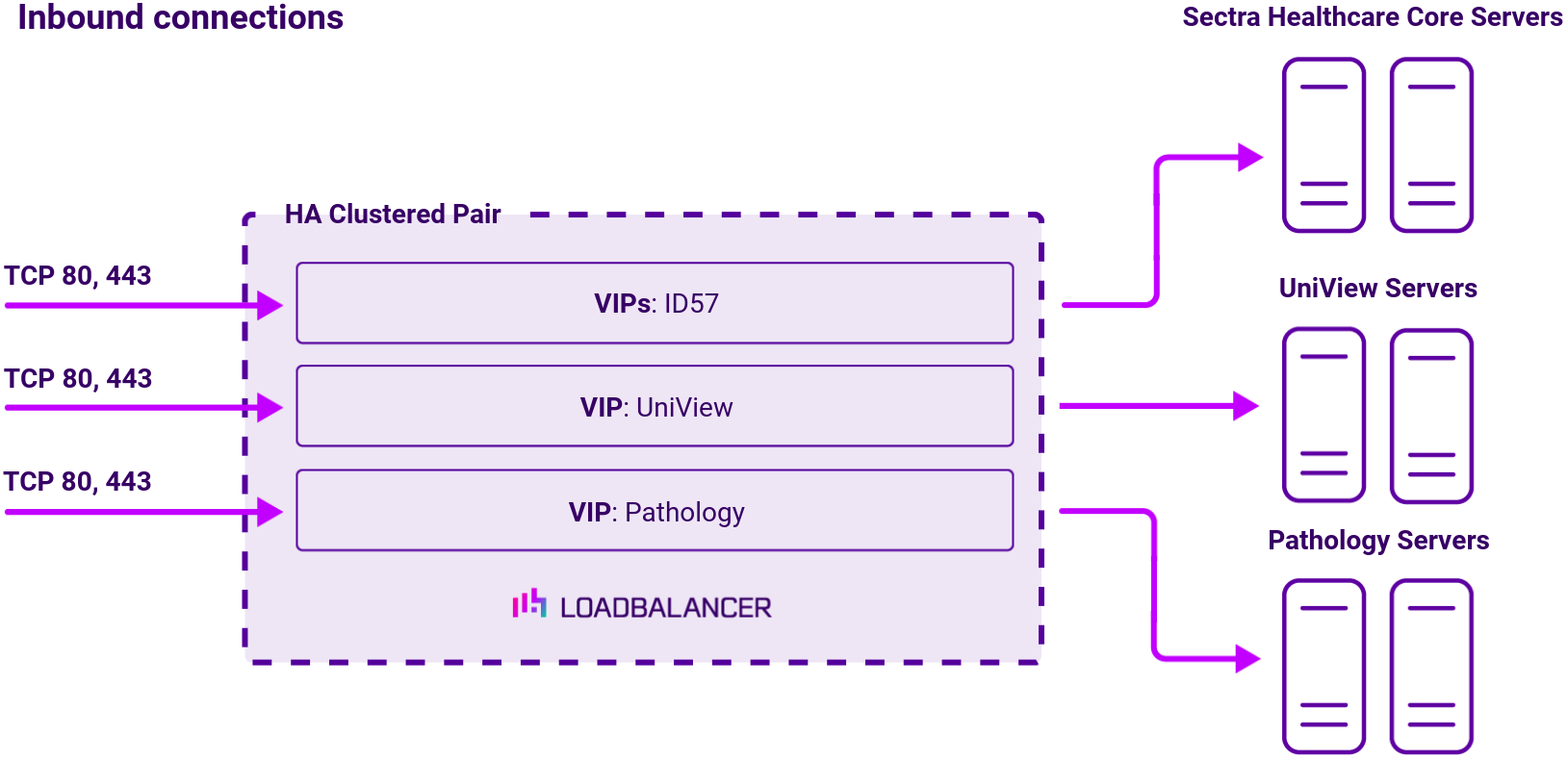
Note
The load balancer can be deployed as a single unit, although Loadbalancer.org recommends a clustered pair for resilience and high availability.
Load balancing topology
Layer 7 Reverse Proxy can be deployed using either a one-arm or two-arm configuration. For two-arm deployments, eth1 is typically used for client side connections and eth0 is used for Real Server connections, although this is not mandatory since any interface can be used for any purpose.
For more on one and two-arm topology see Topologies & Load Balancing Methods.
About Layer 7 Reverse Proxy load balancing
Layer 7 Reverse Proxy uses a proxy (HAProxy) at the application layer. Inbound requests are terminated on the load balancer and HAProxy generates a new corresponding request to the chosen Real Server. As a result, Layer 7 is typically not as fast as the Layer 4 methods. Layer 7 is typically chosen when either enhanced options such as SSL termination, cookie based persistence, URL rewriting, header insertion/deletion etc. are required, or when the network topology prohibits the use of the Layer 4 methods.
The image below shows an example Layer 7 Reverse Proxy network diagram:
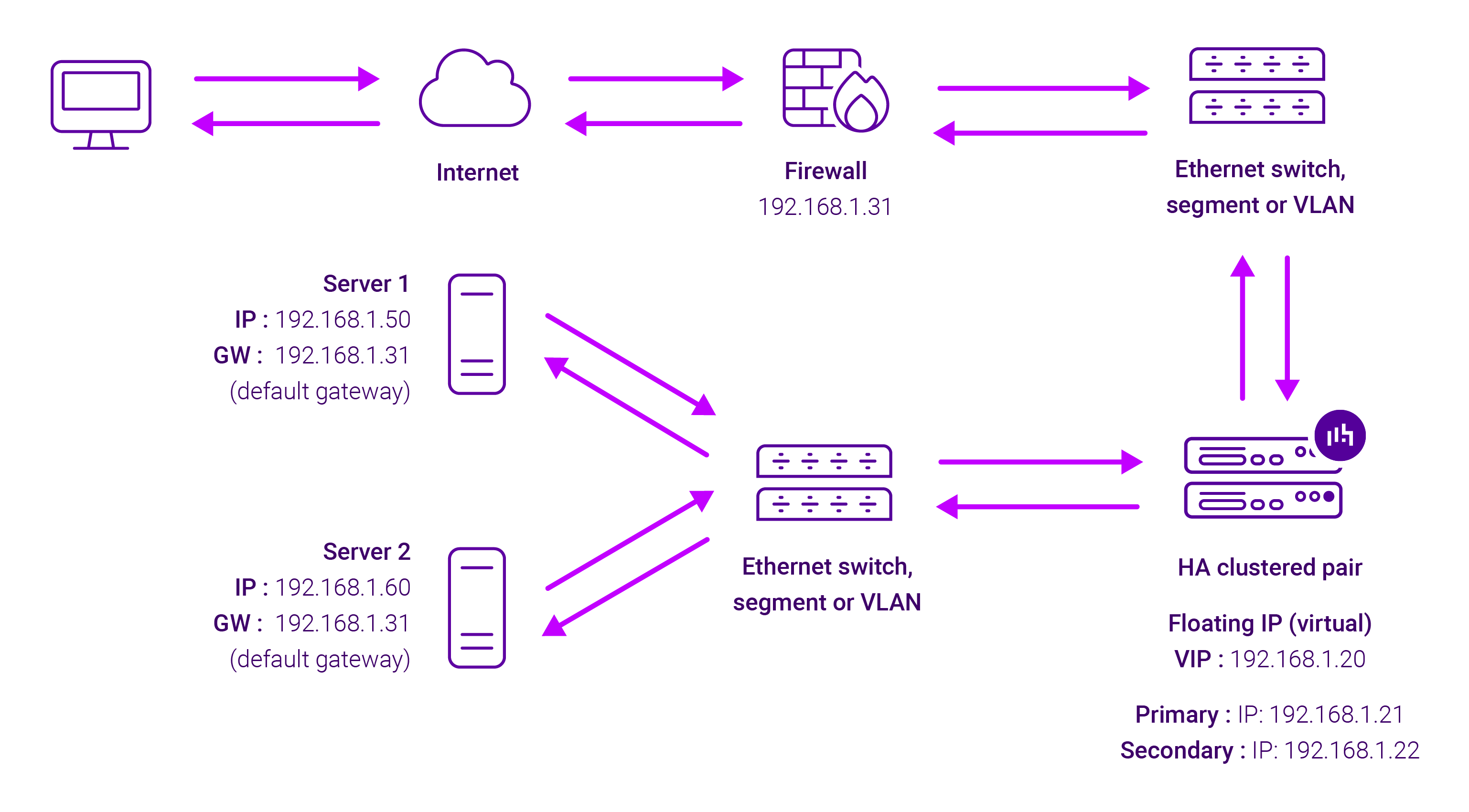
Because Layer 7 Reverse Proxy is a full proxy, Real Servers in the cluster can be on any accessible network including across the Internet or WAN.
Layer 7 Reverse Proxy is not transparent by default, i.e. the Real Servers will not see the source IP address of the client, they will see the load balancer’s own IP address by default, or any other local appliance IP address if preferred (e.g. the VIP address).
This can be configured per Layer 7 VIP. If required, the load balancer can be configured to provide the actual client IP address to the Real Servers in 2 ways. Either by inserting a header that contains the client’s source IP address, or by modifying the Source Address field of the IP packets and replacing the IP address of the load balancer with the IP address of the client. For more information on these methods, please refer to Transparency at Layer 7 in the Enterprise Admin Manual.









